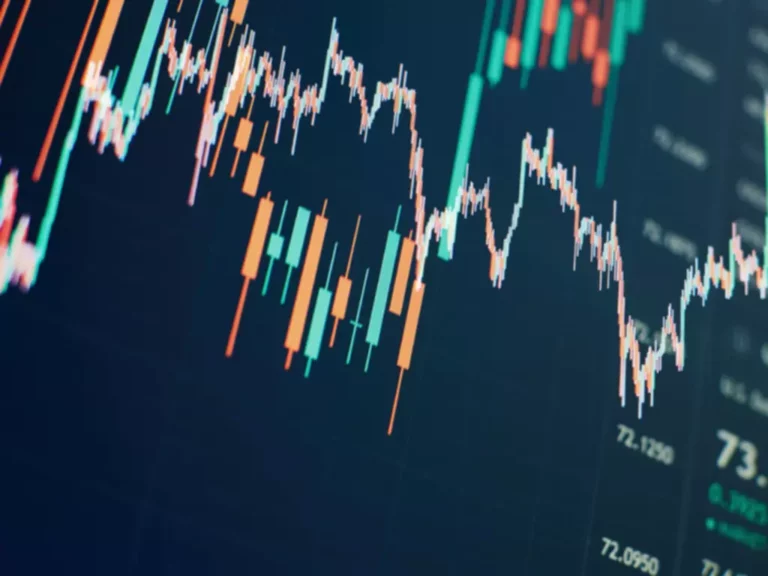Content
The use of AI in stock trading has altered the financial industry with its ability to process vast amounts of data in real time and enable investors to make data-driven decisions. Yes, AI is currently widely applied in the field of stock trading and investment due to the ability of AI systems to process vast masses of information and analyze them in the real-time mode. Besides, ML algorithms are ideally suited to trend prediction and accurate sentiment analysis because of their advanced learning potential. Artificial intelligence ai trading system trading is booming now because its features fit the world of finance ideally.
Aidyia’s hedge fund is entirely run by AI, while other firms like Winton Capital rely on computer algorithms for nearly every vote on investment decisions. While AI can improve accuracy and automate tasks like risk assessment, many hedge fund managers argue that human intuition is still necessary for recognizing patterns. The industry’s Smart contract survivors will be those who integrate technology into their processes, combining the power of AI with human decision-making. As more firms adopt AI, the race for further innovation will be on, and those that don’t invest in machine learning technology will fall behind the curve. Model risks include overfitting and reliance on historical data, potentially leading to poor predictions.
When https://www.xcritical.com/ developing AI projects in finance, it is important to use data from multiple sources. Not only does this help reduce the risk of your model overfitting, but it also ensures that your model is more accurate and robust. One way to incorporate multiple data sources is to use a hold-out set, which can be considered as a part of the data that is not used to train the AI system.
AI traders also analyze forecast markets with accuracy and efficiency to mitigate risks and provide higher returns. Thanks to natural language processing (NLP), sophisticated AI-based financial software can understand and interpret human language. Specifically, NLP technology is used to analyze news articles, social media posts, earnings reports, and other text-based sources, extracting sentiments and key insights. This application of AI in trading helps traders better understand market sentiment and anticipate potential impacts on asset prices.
This allows human traders to focus on higher-level strategic thinking, managing portfolios, and navigating unexpected market conditions that may not fit the patterns AI is trained to recognize. Poor-quality data – whether incomplete, outdated, or inaccurate—can impair the performance of AI models, leading to incorrect forecasts and suboptimal trading decisions. For example, feeding an AI model inaccurate market data could result in strategies that trigger unnecessary trades, exposing portfolios to unnecessary risks. Although not directly AI-driven, the collapse of Long-Term Capital Management (LTCM) in 1998 serves as a cautionary tale of the risks involved with relying too heavily on quantitative models.
The algorithms that are developed will tend to become more complicated as it will be able to accommodate itself to diverse trading patterns using artificial intelligence (AI). We can also anticipate algo trading to move into more pragmatic machine learning (ML) dexterity that can manage real-time deciphering of large volumes of data from many different sources. Enhanced decision-making occurs because AI technologies like machine learning, deep learning and NLP can analyze massive amounts of data and find patterns that people would otherwise be unable to detect. With AI, human emotions do not impact stock picking because algorithms make data-driven decisions. AI trading technologies can handle thousands and sometimes millions of complex calculations in a matter of seconds.

As such, it’s important to understand and keep abreast of developments in the AI and investing space. Automated portfolios guide the user through a questionnaire that then scores a model portfolio that meets the investor’s criteria. In addition to the questionnaire and the scoring of models, these platforms also use AI to determine the best mix of individual stocks for the portfolio, which is often accomplished using modern portfolio theory. Further, automated portfolios are also set to automatically rebalance if the target allocations drift too far from the selected portfolio. Robo-advisors like Wealthfront and Betterment automate the traditional process of working with an advisor to outline investing goals, time horizons, and risk tolerances to create a portfolio. Automated portfolios guide you through a questionnaire that then scores to a model portfolio that meets the criteria of the investor.
This is the kind of AI that allows computers to recognize images like faces or identify a specific species of plant. Even with the many benefits of AI, it’s important to remember that this technology is still in its nascent stages, and there are numerous limitations to it, starting with accuracy. If this data is incorrect, contaminated, or outdated, it can directly affect the results generated by AI algorithms. The integration of more and more data sources, including unstructured data such as social media and news, will further improve the accuracy of forecasts.
The information on this website does not constitute investment advice, a recommendation, or a solicitation to engage in any investment activity. What is important to know that no matter how experienced you are, mistakes will be part of the trading process. Dogecoin and Shiba Inu prices continue to edge down on Tuesday after falling more than 10% on Monday. The recent downturn at the start of this week has liquidated over $108 million from these dog theme-based memecoins in the last 24 hours.
Algo-trading refers to the application of specific trading rules into a program conducting trading operations for the user. The programmer determines the rules, so they are not necessarily based on AI, often being the trader’s intuition. In contrast to algo-trading, AI solutions involve machine learning and analysis of complex human behavior by the machines for achieving more accurate sentiment prediction and making trading decisions.
This technology aids in creating investment strategies, building portfolios, and automating the process of buying and selling stocks.Part 1. AI trading utilize a range of artificial intelligence tools to analyze financial markets, calculate price changes, understand price fluctuations, execute trades, and track market dynamics. Financial firms can get valuable insights into complex trading opportunities that support real-time buy and sell decisions by analyzing stock prices continuously and processing massive amounts of unstructured data. AI systems in algorithmic trading are increasingly used for liquidity detection and management, which is crucial for executing large orders without causing significant market impact.

Since AI systems are only as good as the data they are trained on, if the data is incomplete or biased, the models may fail to capture emerging risks or adapt to sudden market shocks. This was evident during the 2008 financial crisis when many risk models failed to foresee the collapse of mortgage-backed securities. Traders and even companies can artificially influence sentiment by flooding social media or news platforms with coordinated messages designed to move the market in their favor. This creates a risk for traders who rely heavily on sentiment analysis without carefully considering the credibility and source of the data.
To assess the effectiveness and reliability of trained models, they are backtested on historical data. Natural Language Processing (NLP) is a nifty field of AI that focuses on teaching computers how to understand human language. In the world of finance, NLP can be used to perform a variety of tasks, including sentiment analysis, which is all about analyzing text to determine the author’s feelings, opinions, or attitudes towards a particular subject. Another task that NLP can help with is text classification, which involves sorting text into predefined categories.
The first stage needed for an AI model to function properly is robust data collection and preprocessing. Therefore, while AI can significantly improve investment safety, it’s crucial to use it as a tool to augment, not replace, human judgment. Stock screeners are helpful AI tools when choosing individual stocks for your portfolio. The first step is the same for every investor, which is to understand your financial goals so you can move forward with an investment strategy that fits your needs.